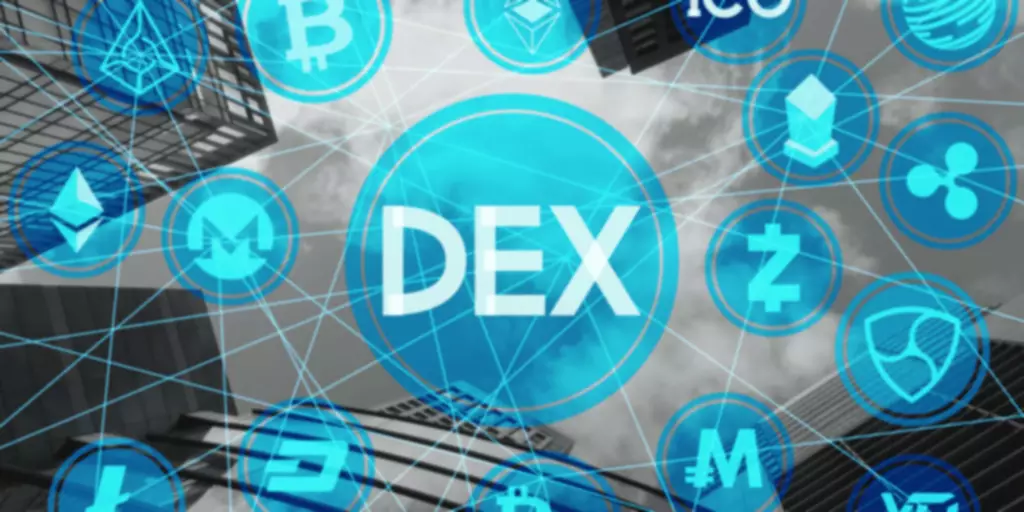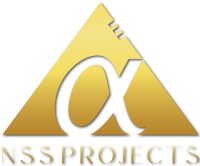Содержание
You can track each transaction’s order by adding timestamps and adding them to transactions. This order sequencing is fundamentally different from the one in Bitcoin or Ethereum, where transactions https://xcritical.com/ are not placed in a timely manner. Similar to NFT volume, the amount of gas fees paid has also seen a strong uptrend since summer 2021 with a smaller drawdown from its peak.
The Alternatives to Solana in Light of Yet Another Outage – CryptoNewsZ
The Alternatives to Solana in Light of Yet Another Outage.
Posted: Wed, 05 Oct 2022 13:53:53 GMT [source]
Solana achieves such efficient transaction speeds by utilizing a centralized network, which comes with a concerning level of risk for its users as mentioned above. The ecosystem is still growing given that the blockchain is still new. A rather unfamiliar correlation between Solana and Ethereum is that whenever there is seemingly a rise in Ethereum’s gas fees, the number of users on Solana increase. The DeFi ecosystem on Solana is still at a very nascent stage, with various DApps being launched on the platform as we speak.
Ethereum Defi Projects
Ethereum has undoubtedly one of the best stateful architectures among the competition due to which it is widely used for making apps on the blockchain platform. The platform records all the transactions in the existing state and copies of the latest transactions are immediately coined to mirror the recent transactions. It is an effective network but is slower when compared to stateless networks. Ethereum 1.0 relies on a PoW consensus mechanism, which is the same mechanism used by Bitcoin’s blockchain. This means that the network is protected by miners, who use their computational power to validate blockchain transactions and generate new blocks.

It has undergone several updates since its launch, the recent being the London Hard Fork update along with the ongoing update, The Merge. With this update, Ethereum plans to shift from its Proof of Work consensus mechanism to the Proof of Stake consensus mechanism. The host first considers technical metrics as transactions per second and number of decentralized applications built on each project’s respective blockchain. A popular crypto analyst is examining how one upstart blockchain designed for scalability compares to the leading smart contract platform. Ethereum is open access to digital money and data-friendly services for everyone – no matter your background or location.
Therefore, this has been in the works for quite some time and it is yet to be seen when the final version is launched onto the mainnet. SOL is the native cryptocurrency of Solana, which can be used for staking and paying transaction fees. Of the multitude of projects that have risen to challenge Ethereum over the past years, Solana has undoubtedly proven to be one of the most successful. Though the ecosystem is still in its early stages, Solana has managed to prove its value to the market and currently stands as the eighth largest project in the world by market cap.
Is Solana An Ethereum Killer?
The slowest of these is Ethereum when it comes to transaction speed. Now each participant in Ethereum has a copy of the digital ledger, and the holder takes care of the operation and management of the network. Now Ethereum is one of the most used and prominent blockchain platforms, due to which it has a lot of crowds to check its transactions. The next leading entry in comparison to Solana vs. Polygon vs. Ethereum draws our attention to another decentralized blockchain network. Solana blockchain is designed to develop highly scalable and user-oriented applications. The blockchain network is currently the quickest and offers one of the fastest and most efficient ecosystems.
Solana has positioned itself as a solution to all Ethereum problems, such as scalability, high gas fees, and low transaction speed. The Solana network, however, offers a smart contract functionality that differs from other projects, in which smart contracts may interfere with one another since they can’t operate in parallel. Ethereum presently leverages the PoW consensus mechanism, drawing power from multiple miners worldwide participating actively in the consensus. PoW consensus demands high computing power, thereby restricting the scope of participation for users. It helps ensure security and complete decentralization for ETH, but it also suffers from concerns of reduced performance.
- Solana provides much faster transactions at a reduced cost when compared to Ethereum and Polygon, while Polygon provides faster transaction speeds.
- Instead, PoS relies on a system of validators, or nodes, to verify each transaction.
- A blockchain is a digitally distributed, decentralized, public ledger that exists across a network.
- However, while Solana uses more established languages, its complex architecture can also create security challenges.
- Another unique feature of Ethereum is the relative maturity of the project.
- One of the most important differences between Solana and Ethereum is their scalability.
The age of a smart contract platform has a significant impact on its security. More stable smart contract platforms are less likely to introduce new security issues in development and have had more opportunities for existing issues to be identified and corrected. Solana blockchain enables better flexibility for arranging the order of transactions. As a result, the consensus mechanism of the blockchain platform empowers it to carry out almost 50,000 transactions every second. Is presently the second most popular blockchain platform after Bitcoin. It not only provides the foundation for cryptocurrencies but also the essential resources for developing decentralized applications.
Where To Buy Solana And Ethereum
Several major art galleries like Sotheby’s also joined in on the fun by listing works of major artists as NFTs. This process is not cheap, and this is why Ethereum 1.0 is considered to be slower than other ‘stateless’ blockchains like Solana. The crypto is down more than 80% for the year, and almost 90% from an all-time-high of $260.
The value of the assets is completely different and in no way related to how the asset is performing in their blockchains. The analyst notes that Solana, which was founded in 2017 and created its first block in 2020, remains in the early stages despite experiencing meteoric growth as a top-10 cryptocurrency. He expects the project will continue to mature and gain further market share from Ethereum. By comparison, the DApp ecosystem on Solana is still in its very early stages, with only two projects exceeding $1 billion in total volume. The largest DApp on Solana is Raydium, an automated market maker designed to provide greater liquidity to traders. Another application is Serum, a non-custodial DEX that provides cross-chain asset swaps, decentralized access to stablecoins, and a variety of wrapped tokens.
The price of Solana’s NFTs started picking up in the second half of 2021. This sale marked the first million-dollar NFT transaction on the Solana network. Solana allows buyers to buy NFTs with no transaction fees and few congestion issues. It means that Solana and SOL NFTs can be more easily accessed than those on Ethereum. It became media-worthy when the app caused a huge congestion on Ethereum in 2017. As of July 2022, 1 ETH is $1,465 and the market cap of Ethereum stands at $178.4 billion, with over 121.7 million ETH coins in circulation.
What Is Financial Investing?
Below is the list of the official accounts of the Ethereum, Solana, and Polygon communities. The blockchain’s performance takes a toll due to high resource requirements. The hardware support needed for the Solana blockchain is costlier than most. The Ethereum blockchain is one of the most stable and efficient platforms available. The blockchain follows a stateless architecture, making it more open for developers to use according to their requirements. But adjusting the second-largest blockchain from one system to another is an incredibly complex, multi-step process.

The Solana blockchain has a block time of 0.4 seconds and a block size of 20,000 transactions, compared to Ethereum’s block time of 13 seconds and block size of only 70 transactions. And it is one of the main differentiators when comparing Solana with Ethereum. The ultimate goal is to eliminate systems in which an individual or group has significant control over them. Not only is Solana ultra-fast and low cost, it is censorship resistant.
Ethereum has been seeing a lot of improvements since the blockchain has moved one step closer to The Merge. With ETH transitioning from Proof of Work to Proof of Stake consensus mechanism, ETH whales have started to accumulate ETH tokens. In a recent report, on-chain analytics firm Sentiment reported that a total of 131 new whales were added to the Ethereum network in the recent weeks, alongside the recovery in prices this month. There has been an increase in the number of addresses in the range of 1,000 to 100,000 ETH.
Let’s dig a little deeper into several of the most notable platforms. These days, Ethereum is the most widely used blockchain system because it makes it possible to create and run applications, smart contracts, and tokens. These features have made Ethereum a true innovator in the blockchain world. The other major blockchain of the time was Bitcoin, but its capabilities were limited only to the issuance of virtual currency. Ethereum and Solana use different methods for processing transactions and maintaining their respective blockchains. These are called consensus mechanisms because they are predicated on getting computers to agree to add data sets to a network.
Ethereum’s London Hard Fork update was implemented to reduce the high transaction fees and enhance its scalability. Ethereum accounts created by the user can make transactions like sending and receiving. The DApp ecosystem on Ethereum is extremely mature, and includes well-known projects such as Uniswap , Curve Finance , and OpenSea, the world’s largest NFT marketplace. Currently, the total value locked in Ethereum DApps stands at $121.3 billion, the highest in the world by a significant margin.
However, the demand for blockchain platform apps has been increasing day by day, and due to this, the solutions for the same have been growing at a much faster pace. However, if Ethereum fails to solve the scalability problem, more and more new applications will be created on other platforms, and many existing ones may be transferred to new protocols. Solana was brought into the tech world as a remedy for major pain points of well-known blockchains such as Bitcoin and Ethereum.
Solana Vs Ethereum: What Are The Differences?
The problem with Ethereum is the requirement of high processing power. Due to this, it does not allow the scope for multiple users to participate in this, although it allows miners globally to participate in the consensus. Since processing power requirement is high, it also takes a toll on the performance but ensures better security. We already know the most popular blockchain platform in the world is Bitcoin. Ethereum comes in second place and is one of the most favored blockchain platforms for creating decentralized applications. Ethereum has been responsible for creating an open economy by providing its own cryptocurrency and platform for developing decentralized applications.
Moreover, Solana achieves scalability by employing the Turbine block propagation protocol that breaks down data into smaller fragments to transfer it across the Network easily. Polygon, on the other hand, uses a consensus, based on Proof of Stake or PoS. Users get a chance to earn MATIC tokens by taking on the Polygon network. The consensus for Polygon can be achieved faster due to the combination of technologies offered by Polygon. Now taking a look at Solana, the consensus mechanism provides an efficient operation to cater to its faster transaction speed.
Solana uses a Proof-of-Stake to validate the state of the blockchain. Users can earn rewards for participating as validators with this system. Validators are picked through random selection and from among the top token holders. Understanding the differences between Solana and Ethereum might help you improve your trading outcomes and better understand the market.

It can be called a more hybrid form of blockchain platform, which companies the good features of both Ethereum and Solana. However, Layer 2 scaling with multichain network support solves the scalability problem. Solana can process up to 50,000 transactions per second, due to which scalability issues do not exist. Users have access to faster transaction speeds, better consensus models, and efficient architectures. Polygon offers the same scalability as Solana with exceptional transaction speed. Solana is one such highly functional open-source project that implements a new, permissionless, and high-speed layer-1 blockchain aiming to deliver high throughput and low costs.
Decentralizedand Secure
To contributing in open source software for anyone in the world to benefit from the increased functionality. Ethereum is a ledger technology that various companies use to make new programs, and Ethereum is being operated over Blockchain technology, thus making it part of the earliest Blockchain technology. SOL was traded at US$65.06 with a maximum supply of 489 million coins and a circulating supply of 286 million tokens. Archivers are a network of nodes where Solana’s validator nodes offload the data; now, these nodes may consist of essential laptops or PCs that the network uses for data storage. Solana owed its origin to 2017, when its whitepaper was published by Anatoly Yakovenko, who previously worked at Qualcomm and Dropbox.
What’s Solana?
Conversely, Solana’s proof of stake network offers cheap and fast transactions, but less infrastructure and security on its blockchain. It is a mandatory process that you will find among all decentralized blockchain platforms. The Ethereum that follows is a proof of work or PoW mechanism of consensus. Because of this, it does not allow What Is Solana multiple users to participate, although it does enable miners to participate in a global consensus. As processing power requirements are high, it also affects performance but assures better safety. The comparison of Solana vs. Polygon vs. Ethereum brings its footnote rapidly from such concerns and has also grown considerably.
Solana Sol Vs Ethereum: Analyst Pits Eth Against One Of Its Biggest Competitors
In two years, this new cryptocurrency network has challenged Ethereum’s dominance in dApps and smart contracts by running faster and cheaper. It’s one of a new breed of blockchain networks that are challenging Ethereum’s model with innovations of their own. Solana, on the other hand, has a different approach to the consensus mechanism.
